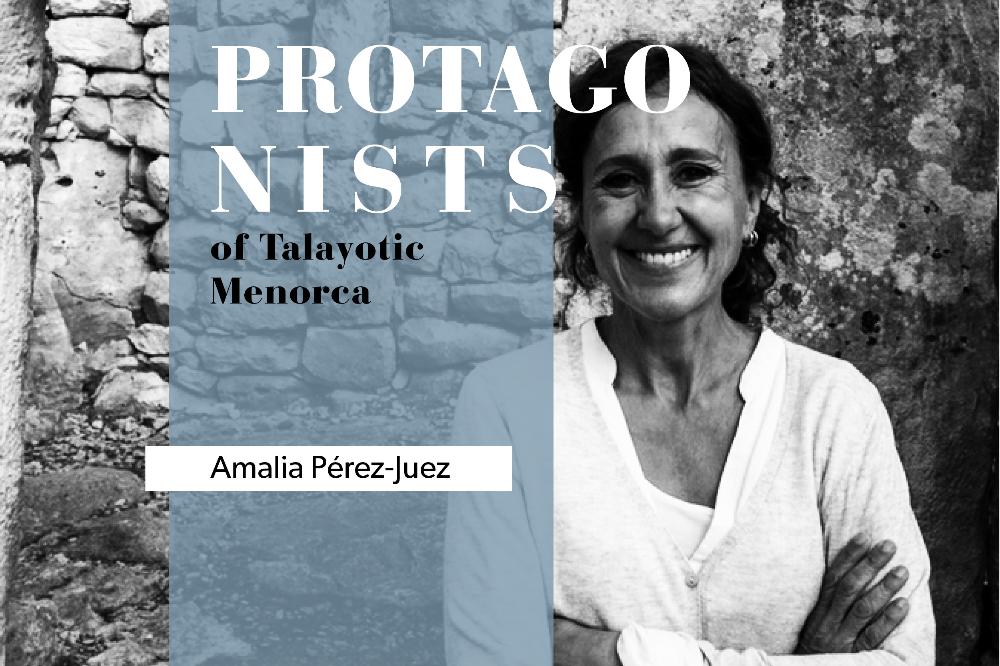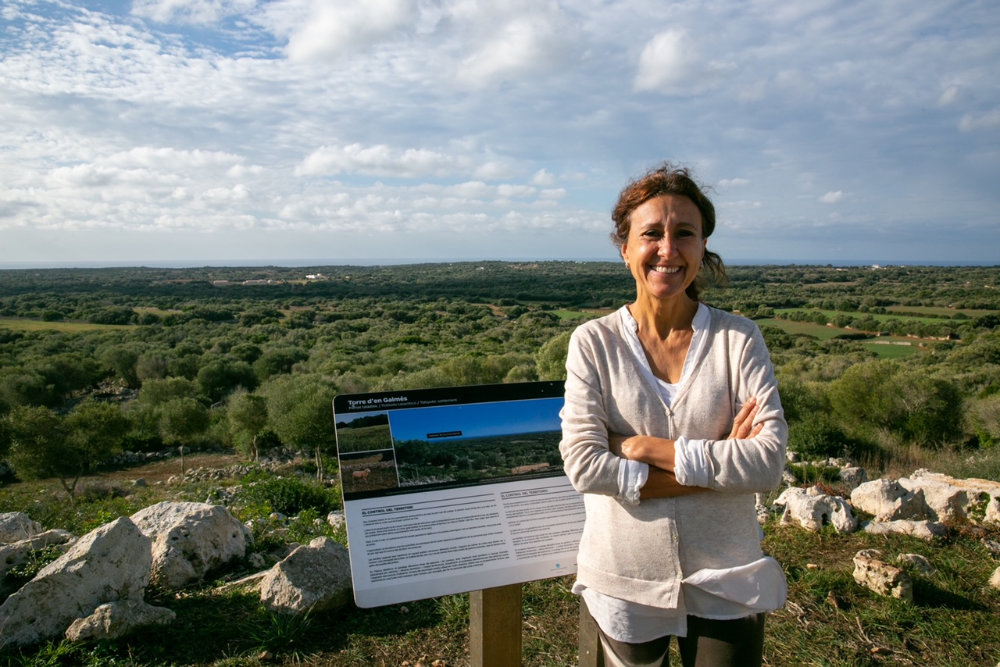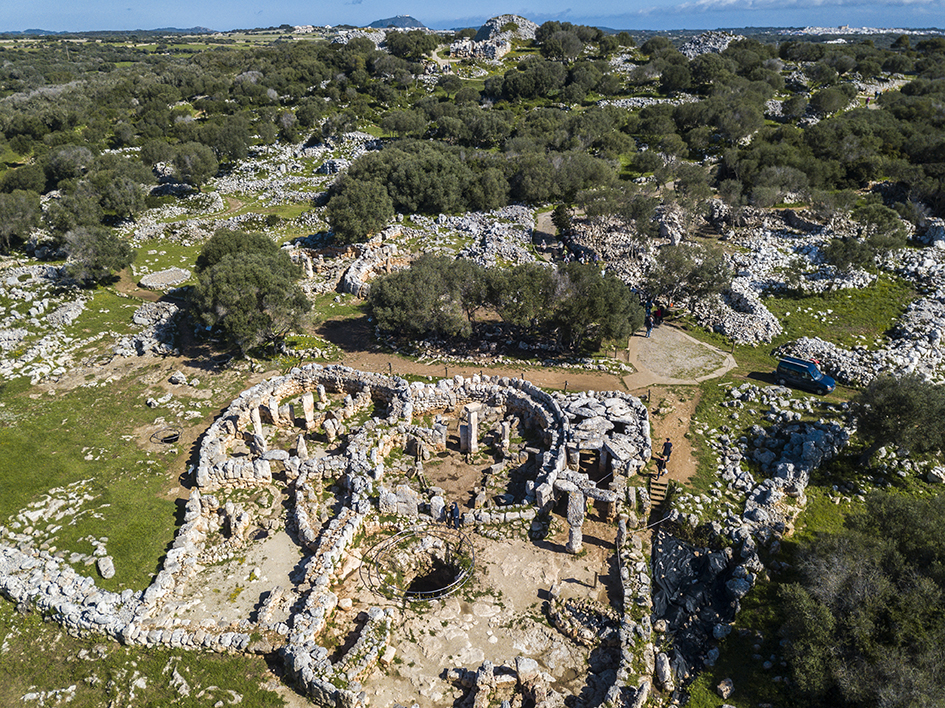 Amalia Pérez-Juez has a doctorate in Prehistory and Archeology from the Autonomous University of Madrid. Currently, she is director of the Boston University Study Abroad Programs in Spain and an associate professor in the History and Archaeology departments. For more than twenty years, she has been excavating, researching and teaching about archaeological sites from the Iron Age to the 20th century in Spain. Her speciality focuses on the management of archaeological heritage, a key part of the research that she was able to develop by directing the Cultural Management Area of the Atapuerca Foundation. She has also published numerous books and papers, and since 2001 has co-directed the Boston University Field School in Archaeology & Heritage Management project on different sites of Menorca, especially in Torre d'en Galmés. Pérez-Juez is a member of the Institut Menorquí d'Estudis and the Spanish ICOMOS Committee.
Amalia Pérez-Juez has a doctorate in Prehistory and Archeology from the Autonomous University of Madrid. Currently, she is director of the Boston University Study Abroad Programs in Spain and an associate professor in the History and Archaeology departments. For more than twenty years, she has been excavating, researching and teaching about archaeological sites from the Iron Age to the 20th century in Spain. Her speciality focuses on the management of archaeological heritage, a key part of the research that she was able to develop by directing the Cultural Management Area of the Atapuerca Foundation. She has also published numerous books and papers, and since 2001 has co-directed the Boston University Field School in Archaeology & Heritage Management project on different sites of Menorca, especially in Torre d'en Galmés. Pérez-Juez is a member of the Institut Menorquí d'Estudis and the Spanish ICOMOS Committee.
Initially, you studied Law. What made you change course in your professional career?
In fact I started studying History, I really liked the topic of heritage protection. When I started, nobody did heritage management. So I combined History and Law until I was granted two Erasmus scholarships, one of them in France.
Your relationship with Boston University began when you were a student, what led you to cross the pond?
When I came back from France, I requested a doctoral scholarship in the US and got it. I studied in Boston, made some contacts, and when I returned to Madrid and finished my thesis, they hired me at Boston University Madrid. Since then, I have maintained a constant relationship with their international study programs.
And how did your interest in Talayotic Menorca arise?
At the department in Boston University they asked me to organize an archeological work camp, a compulsory internship for students during the summer. So, I thought: what place is there that is scientifically amazing and where we can spend six weeks with students during the summer? The answer was crystal clear. Also, I know Menorca well, ever since I was little I have come with my family and have always been very interested in taulas and conservation of the sites. I was always very attentive to what was happening on the island. Let's say that my personal and scientific interests coincided. For projects to move forward, you need a person who has enthusiasm, it didn't take me long to get back to the department and present the project in Menorca. Two colleagues from the university immediately tagged along, they fell in love with the island, with the scientific possibilities of the project… In Madrid, I had excavated a lot of the Iron Age, which is the same period of the Talayotic sites.
From your point of view, what are the most valuable contributions of the Menorca Talayotic candidacy?
The candidacy seems excellent to me, I don’t understand how it hadn’t been done before, it is amazing. It contributes many things to World Heritage, firstly: the excellent state of conservation of the monuments. The number of sites is impressive and so well preserved. They can be counted by the dozens. Additionally, they are in a living state of conservation, it is not that they have been abandoned and covered by vegetation, rather they have been continually used in one way or another throughout 2,000 years. That relationship between man and the territory is fundamental. On top of that, scientifically it has tremendous potential. It is a culture that interacts in the Mediterranean during the 1st millennium BC., of which things are known but at a local level. Sharing all this knowledge with the world is very important, it is a very good candidate.
Together with Boston University you have already worked on 17 campaigns in Menorca, how did the project begin?
We started working here in 2001, hand in hand with Amics del Museu de Menorca. At that time, it was just them and Sanitja's project. As of 2003, we decided to separate the projects because doctoral students from Boston University began to come and wanted to continue with the work during the year, we also had colleagues who wanted to join to do geoarcheology, fauna, botany, etc. We managed to put together a team large enough to be able to set up our own project. Since then, we have come back every year, except when we have had a study season, which is when we dedicate ourselves to studying and analysing things.
What do you think are the main achievements of the Boston University project in Menorca?
When we started 20 years ago we wanted to study the diachronic occupation of Talayotic sites, that is, we didn’t want to stop at the Final Talayotic or in Roman times. Our project was focused on the use of domestic space over time, on how different cultures had adapted the sites: the Talayotics, the Romans, the Muslims, even in modern times. This diachronic study was a contribution from Boston University and I believe that we have contributed to the understanding that the sites continue to be reoccupied and abandoned over time. Even in the 21st century they are busy with tourists or archaeologists! They are a living space in which the sequence of occupation can be followed.
The second thing that we have contributed to, I think, is the study of the Andalusian world in Talayotic sites. The Muslim trace is present in Menorca, we see it in the toponymy for example, but there was no specific study on the reoccupation of the sites in the Middle Ages. Since 2010 we have tried to map and excavate, in collaboration with other colleagues, all the Islamic structures that appear at least in Torre d'en Galmés.
Thirdly, when we arrived in 2001, we provided a very interdisciplinary way of seeing archaeological excavation, perhaps because we had a team that came from all branches, people who study fauna, seeds, carbon ... Now it is done in all of the sites, but back then it wasn’t so common.
And finally, from the beginning we said: we are going to take the results of our studies to the most important congresses in Spain, Europe and the US. And so we did from the second year on. Since then, there has been an annual presentation or publication by Boston University which, I believe, has helped to spread the word about work that is being done in Menorca.
 Despite the pandemic, Boston University was able to continue work on Torre d'en Galmés. What progress has been made?
Despite the pandemic, Boston University was able to continue work on Torre d'en Galmés. What progress has been made?
Although the students couldn’t come due to the covid crisis, we managed to carry out the 2020 campaign with volunteers, the collaboration of Friends of the Museum and colleagues who came from all over.
We have identified eight Islamic houses in Torre d'en Galmés, we excavated two a few years ago and in 2019 a third. In 2020 we finished excavating a 12th century house, restored it and it is now open to the public. Now, one can see all the phases of occupation of the site.
On June 17 they plan to resume work in Torre d'en Galmés, what are the plans for the 2021 campaign?
Well, we hope it lasts until the end of July. We will continue to do the same, we want to get a complete picture of what the Islamic sequence in Torre d'en Galmés is and how it is articulated with the Talayotic substratum below.